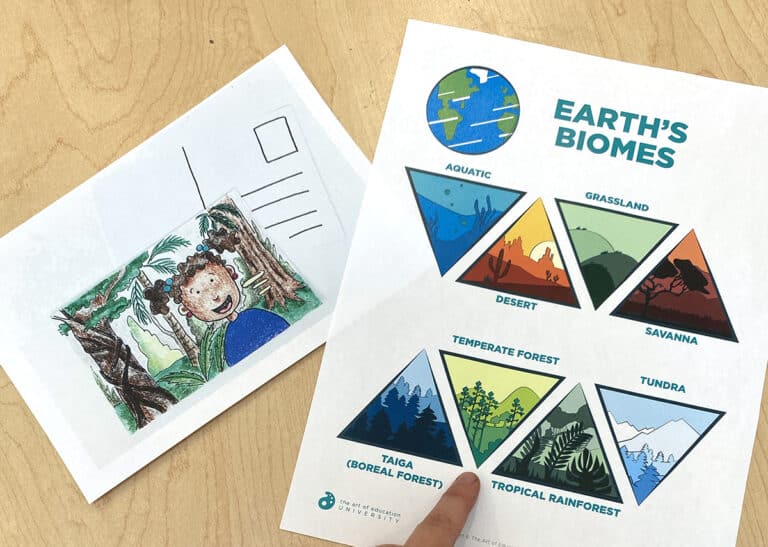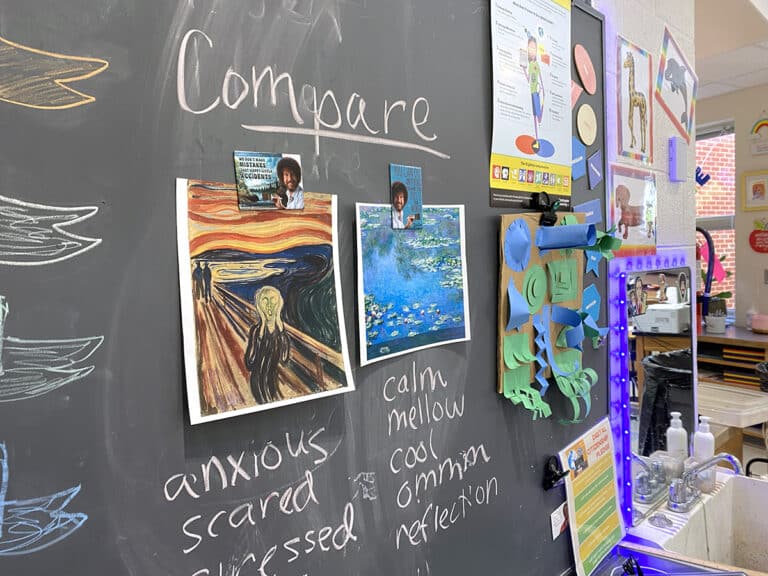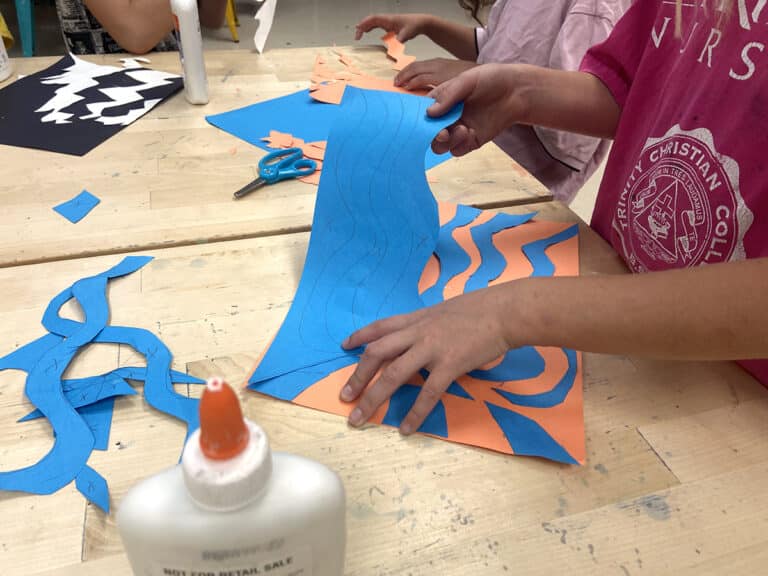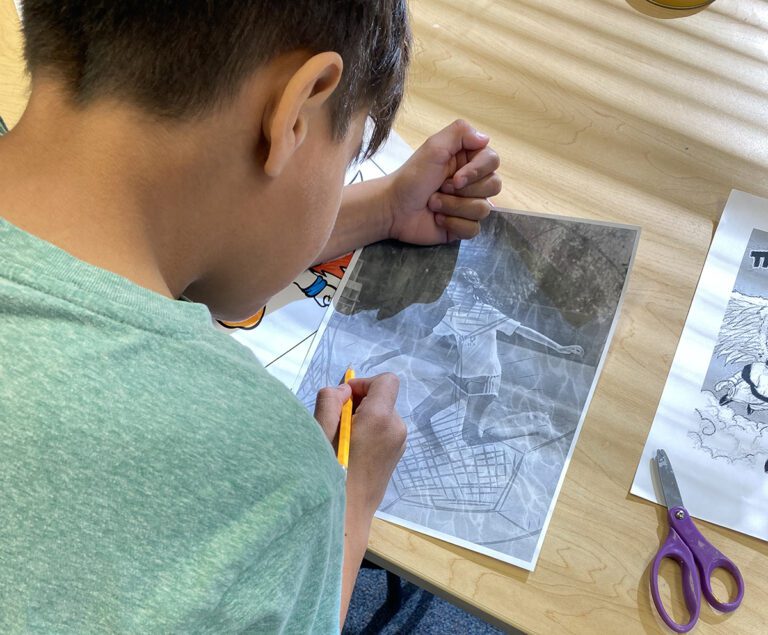Note: Be sure to review all resources and preview all artists before determining if they are appropriate to share with your students.
Surrealism allows us to enter a world where imagination reigns and reality is wonderfully distorted. There are many iconic Surrealist artworks, from The Son of Man to The Persistence of Memory. However, there are an array of lesser-known Surrealist (and Surrealist-inspired) artworks ideal for energizing your K-12 art lessons. These captivating pieces will help your students delve into the dreamlike and the extraordinary while fostering creativity to envision beyond the norm. Get ready to transform your lessons with these weird and beautiful artworks that promise to inspire and hook young artists in new and exciting ways.
Keep reading for some weirdly awesome artwork that your students won’t be able to stop staring at!
What is Surrealism?
Surrealism is an art movement that emerged in the early 20th century. It aimed to unlock the imagination and explore the unconscious mind. Characterized by dreamlike imagery and unexpected juxtapositions, Surrealism challenges our perception of reality, blending the fantastical with the everyday. This movement invites viewers to engage with artworks that defy logical explanations and provoke deep psychological insights. Students love Surrealism for its mystique and clever imagery.
1. The Dancing Wind by Rob Gonsalves
Rob Gonsalves (1959–2017) was a Canadian artist known for his innovative use of perspective and optical illusions in his paintings. His background in architecture provided him with the skill set to master perspective, points of view, and 2D design to play and bend reality. His goal was to create paintings that spoke to the wonderful imagination of children. Gonsalves’ work often features seamlessly blended transitions between reality and fantasy, creating intriguing and imaginative visual experiences.
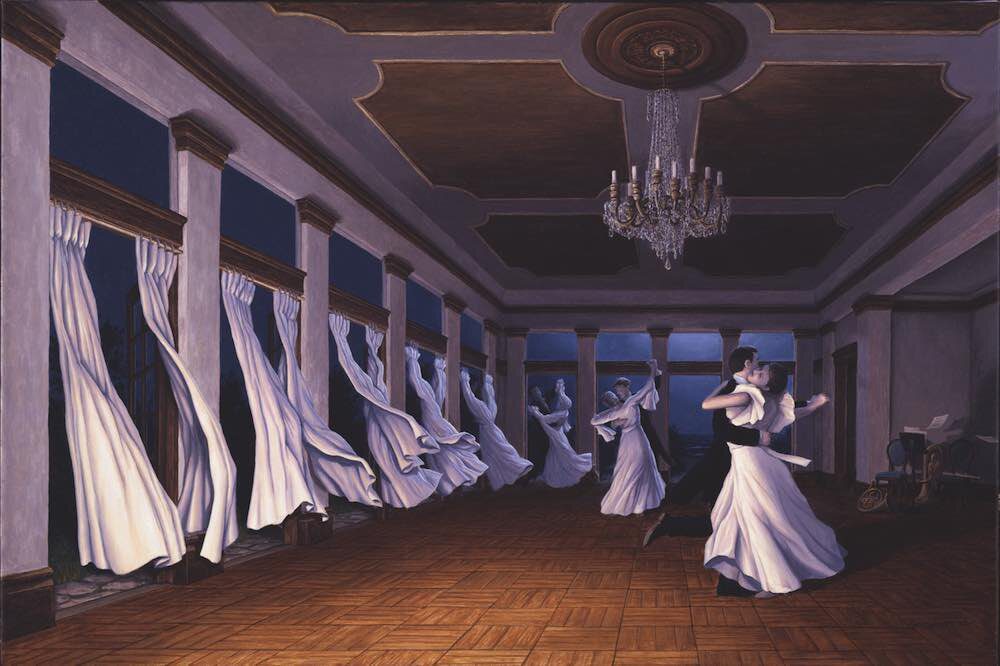
Classroom Application
Use this artwork to teach students how to manipulate objects to transform them into something else. Students merge two different worlds or settings in one composition. Students can also select two objects and have them morph from one to the other. Guide students through Surrealism and how to create concept drawings with the Dream Drawing Lesson in FLEX Curriculum.
2. Untitled (2012) by Kyle Thompson
Kyle Thompson is an American photographer known for his eerie and surreal images. He explores themes of isolation and the uncanny. Thompson’s ability to evoke a sense of unease and wonder through unconventional settings and compositions creates a dreamy yet unsettling atmosphere. He applies Surrealist techniques to photography that challenge viewers’ perceptions of reality.
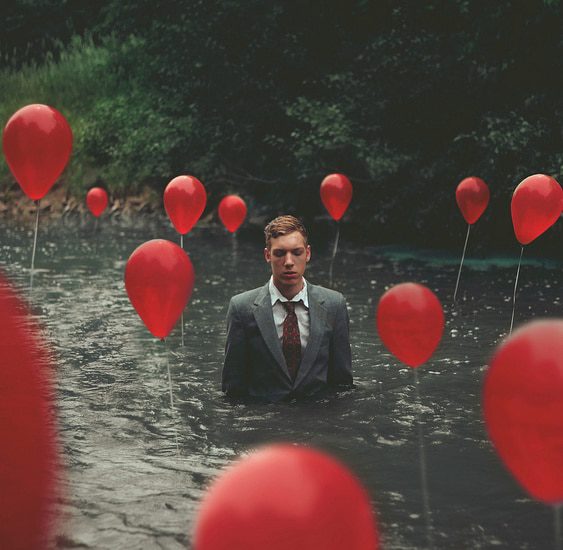
Classroom Application
Introduce this photograph to show how placing a repeated object in an unexpected scene can create interest and tension. Students stage and create their own photos, focusing on the scene, pose, and objects. Take it one step further and play with digital editing to replicate objects throughout the photo.
3. Crown by Josh Keyes
Josh Keyes is an American contemporary artist whose detailed paintings often feature animals in fantastical and fragmented landscapes. His work combines realistic details with powerful poses to create thought-provoking and visually striking imagery. He imaginatively explores themes of nature and the human condition through symbolism. His environmental commentary is a great avenue to prompt students to think more conceptually.
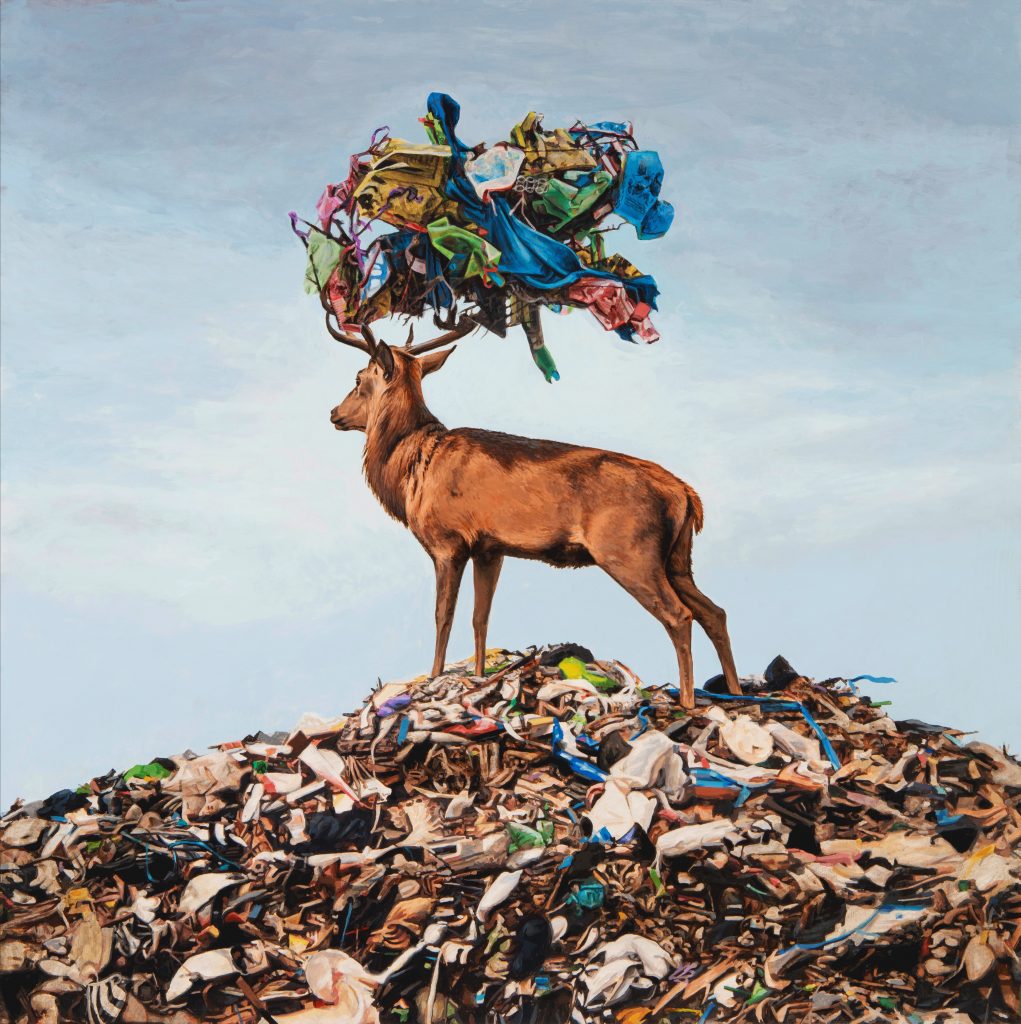
Classroom Application
Use this painting to explore symbolism. Identify a list of things students see. Then, reflect on what they may represent, especially in context altogether. Students select their own environmental issues to advocate for. Brainstorm a list of symbols that will convey their issue and message. Play with composition to explore various options for arranging their symbols. The Surreal Still Life Lesson in FLEX is a perfect way to explore symbolism with personal objects.
4. Watcher 02 by Naoto Hattori
Naoto Hattori is a Japanese contemporary artist known for his intricate and whimsical surreal paintings focusing on stream-of-consciousness creativity. His work features outlandish creatures characterized by highly detailed and distorted features. Distinguish his work by his use of bold, vivid colors and meticulous texture details, both of which create deeply immersive, unique worlds. His art brings bizarre creatures to life, drawing fascinated viewers of all ages.
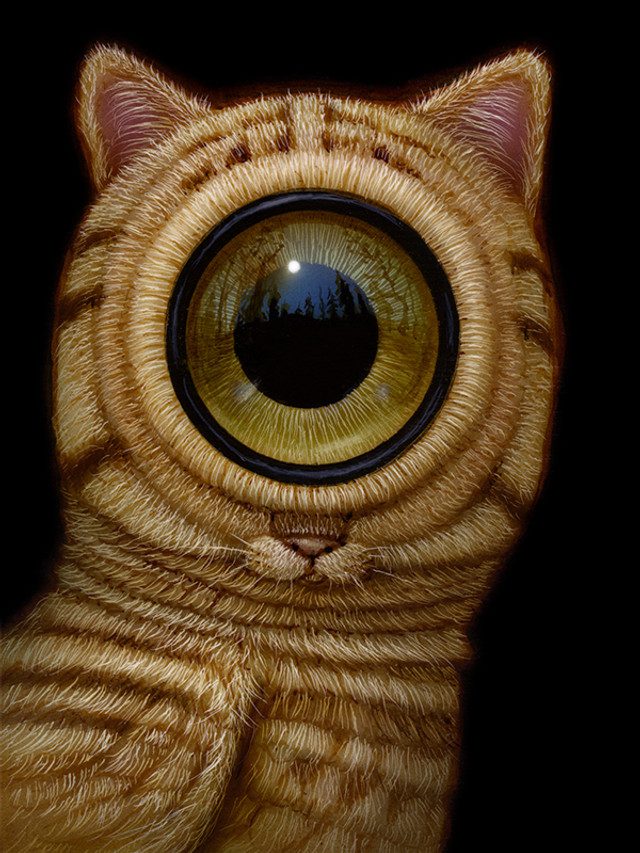
Classroom Application
Examine Hattori’s artworks to identify familiar animals and features. Compare and contrast with traditional images of the same identified animals. Discuss how the shift in scale of some of the features changes the feel of the artwork.
5. Mama, Papa is Wounded! by Yves Tanguy
Yves Tanguy (1900–1955) was a French surrealist painter and writer recognized for his abstract and otherworldly, timeless landscapes. His work is characterized by unconventional shapes and vast, dreamlike spaces. Tanguy explored the subconscious mind through automatism, making him a key figure in Surrealism.
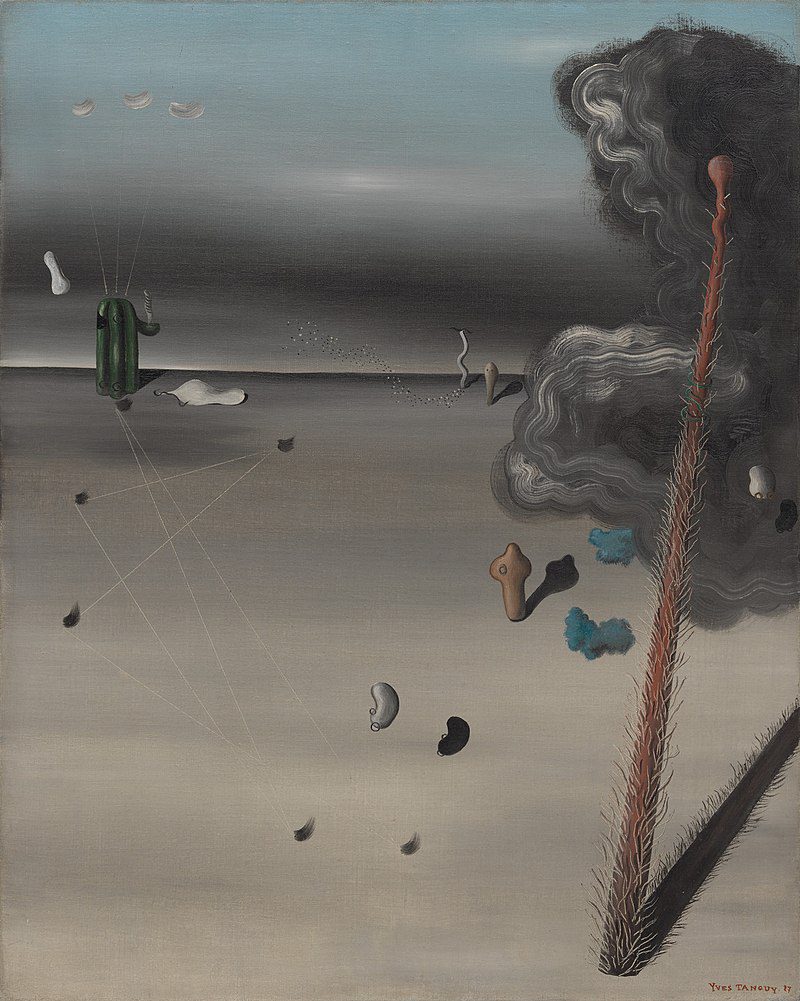
Classroom Application
Introduce this artwork to discuss abstract forms, what a landscape is, and the parts of a landscape (foreground, middle ground, and background). Students share where each form is located on the picture plane. Compose a story for what’s going on in the landscape, using evidence to support the scene. Students design their own ethereal landscapes, using abstract forms and textures to produce a unique and imaginative scene. Use the FLEX Lesson, Landscape: Choices by Chance, to compose landscapes in unconventional ways.
Surrealism offers an exciting opportunity for students to break free from conventional thinking and explore the potential of their imaginations. Surrealism artists and Surrealist-inspired artists provide engaging images your students won’t want to stop examining and talking about! The artworks above introduce the world of Surrealism through exaggeration, juxtaposition, symbolism, and abstraction. Use them in your next lesson with a fun Surrealist game to jumpstart your students’ imagination. Encourage them to embrace the unexpected and see how far their creativity will take them!
Who is your favorite Surrealist artist?
What is a Surrealism project that you love to teach?
To continue the conversation, join us in The Art of Ed Community!
Magazine articles and podcasts are opinions of professional education contributors and do not necessarily represent the position of the Art of Education University (AOEU) or its academic offerings. Contributors use terms in the way they are most often talked about in the scope of their educational experiences.

